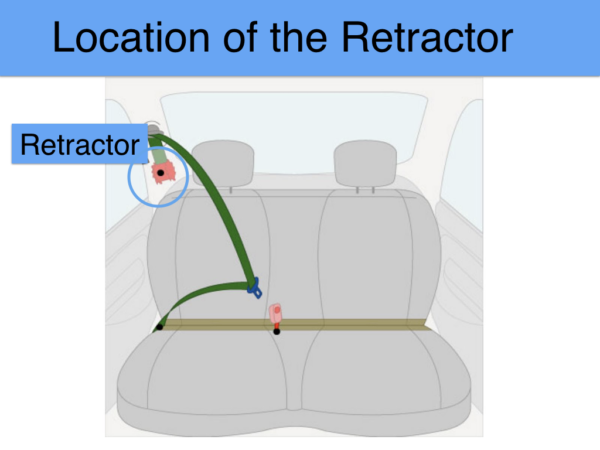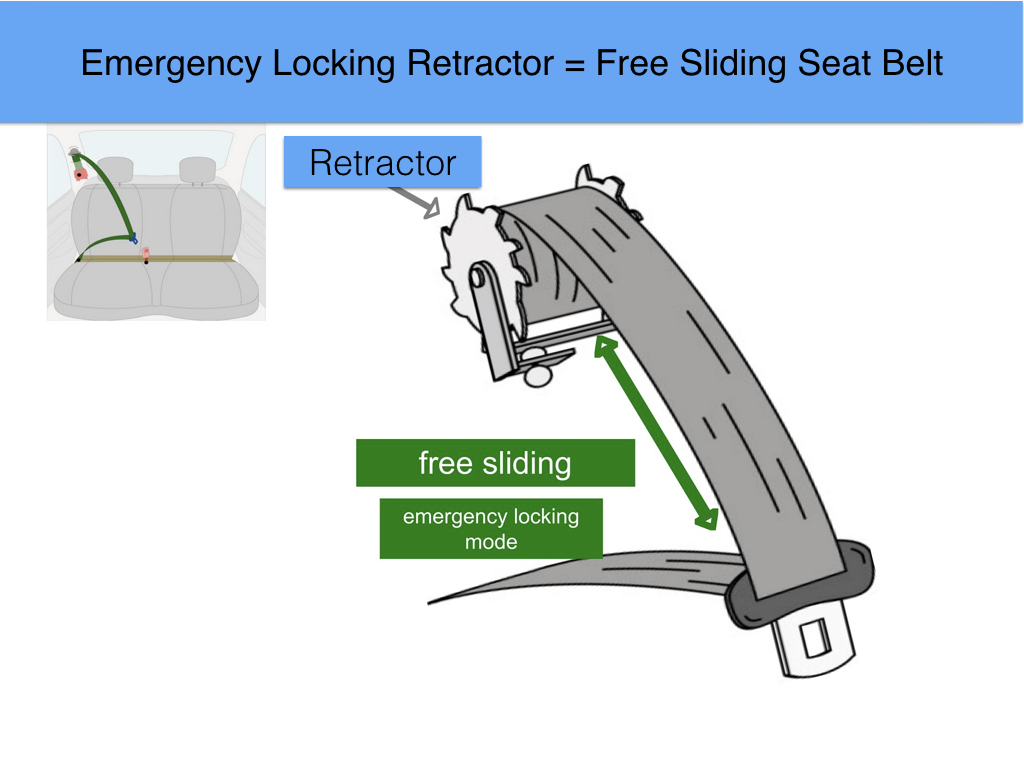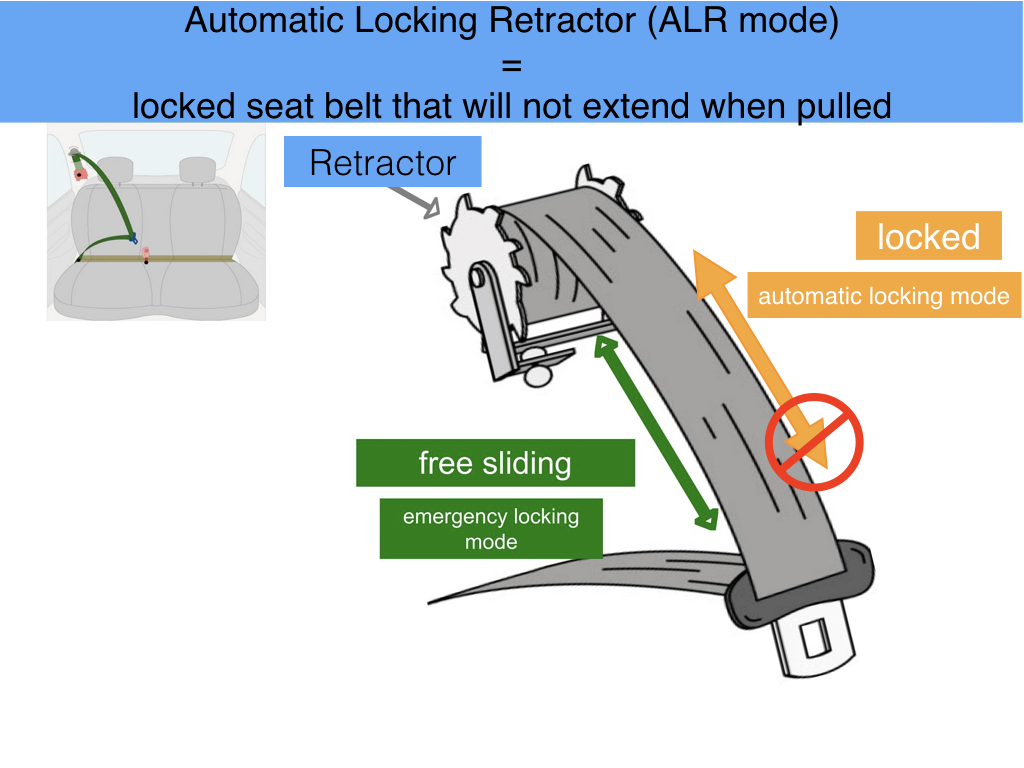You’ve probably heard about “locking the seat belt,” but do you know what that means or how or why or when to do it?
Here’s an explanation so you can understand this important part of seat belt technology and learn how to use it (or not use it) properly.



How do you activate the automatic locking mode? Changing the belt from the emergency to automatic locking mode is easy! Simply pull the shoulder belt out all the way (do it slowly) and when you get to the very end, let the belt go back in a little bit. As it goes back in you may hear a ratcheting sound, and if you give a gentle pull you’ll notice that the belt is locked and it is not possible to make the belt any longer. In the automatic locking mode, the shoulder belt only gets shorter. It doesn’t get longer–and this is how you can use it to hold a car seat tight. The seat belt will go back to “normal” when you let the belt all the way back in.
Some cars do not have a switchable retractor. Most Jeep, Chrysler, and Dodge vehicles do not have switchable retractors. Instead they have only the emergency locking retractor. Other vehicles that may not have a switchable retractor are some vehicles made by GM, Ford, Saab, and Volvo. Some vehicles have alternative ways of locking the seat belt. Your vehicle’s owner’s manual will describe the type of locking mechanism the seat belts use.
Do you need to use the automatic locking mode in order to install a car seat properly? We don’t have a straight answer for this one — the true answer is “maybe.” Read your car seat’s instruction manual to determine if it requires the seat belt retractor to be put in automatic locking mode. Keep in mind that you may not be installing the car seat with the seat belt at all (if you choose to install with lower anchor connectors instead of the seat belt) or you may have a car seat with a built-in seat belt locking device which makes locking the retractor unnecessary. In all cases, READ THE MANUAL.
Other reasons to lock the seatbelt: Several dozen children have nearly strangled to death after finding an unused seat belt and in the midst of playing with it, wrapped it around their necks. Learn more about this issue and how to prevent it.
